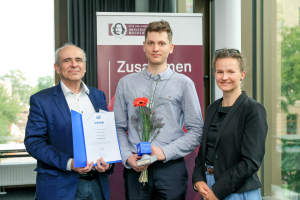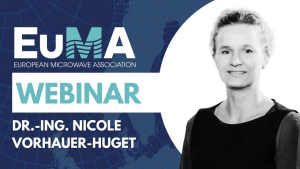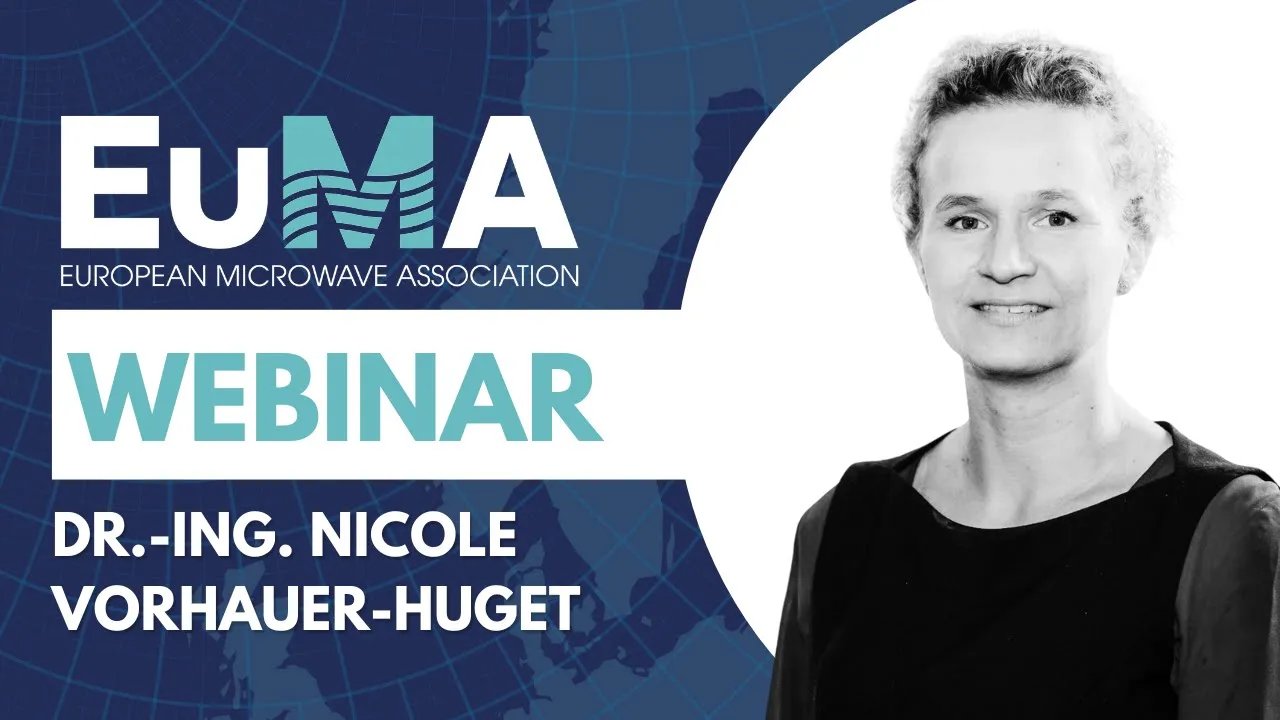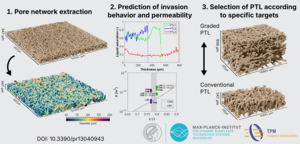News
Exchange Student from Purdue University Mr. Carter William Schmitt
A success story that will hopefully continue:
Carter William Schmitt, an American and Purdue Universityundergraduate student, visited OVGU as part of his studies in the first half of 2025 (FVST Auslandsaufenthalt). In addition to successfully completing numerous courses in process and systems engineering, Carter actively participated in research at the Chair of Thermal Process Engineering as an intern and student assistant in the Transport in Porous Media research group.
He was able to present his successful experiments with mealworms in a lecture at the international online conference “The 4th International Electronic Conference on Processes.” Carter's preliminary investigations were continued in a cooperation project with the University of Chemical Technology and Metallurgy in Sofia (Bulgaria) in the second half of the year and, with a little luck, will be the starting point for a scientific research project between OVGU and the Technical University of Munich in the coming year.
We would like to thank Carter for his tremendous support of our experiments and their evaluation, as well as for his phenomenal presentation at the 4th International Electronic Conference on Processes! We wish him every success and all the best for his studies and hope to stay in touch with him in the future!
Best Oral Presentation Award for M.Sc. Lucas Briest at AMPERE Conference
Our Ph.D. student Mr. Lucas Briest has received the first award for the best oral presentation at the AMPERE conference 2025, which took place from 15th to 18th September in Bari, Italy. The international conference with key focus on high power microwave applications takes place every two years. Lucas has presented our recent results in the field of microwave drying of bricks and tiles.
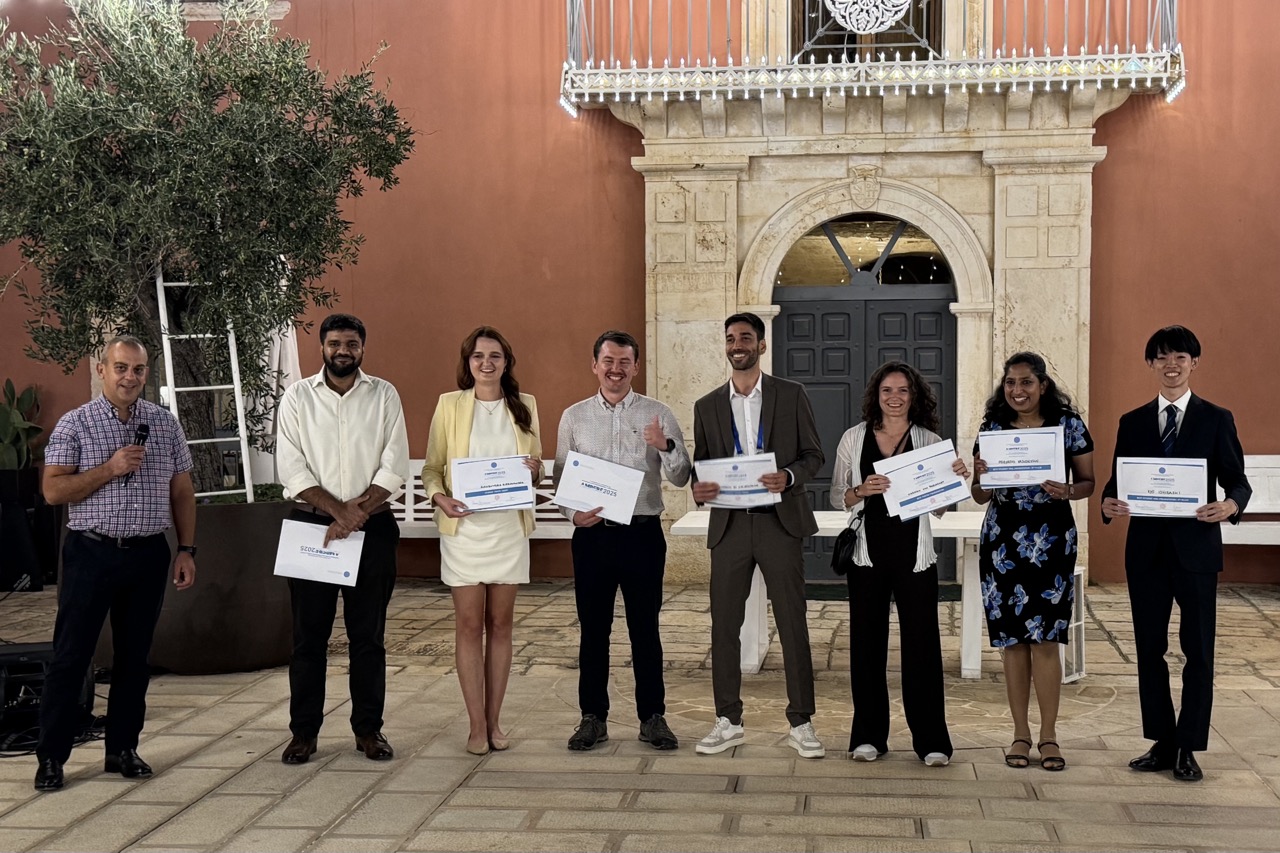
We wish Lucas much success with his excellent work for the future.
VDI Magdeburger Bezirksverein Förderpreis 2025 for M.Sc. Felix Faber
Felix Faber has received the Förderpreis 2025 from the VDI Bezirksverband Magdeburg for his Master thesis on "Development of a non-isothermal pore network model for primary freeze-drying of pore structures reconstructed from X-ray tomography image data". Further details can be found in his publication in Drying Technology: https://doi.org/10.1080/07373937.2024.2407062.
We congratulate him to this great achievement and wish him all the best!
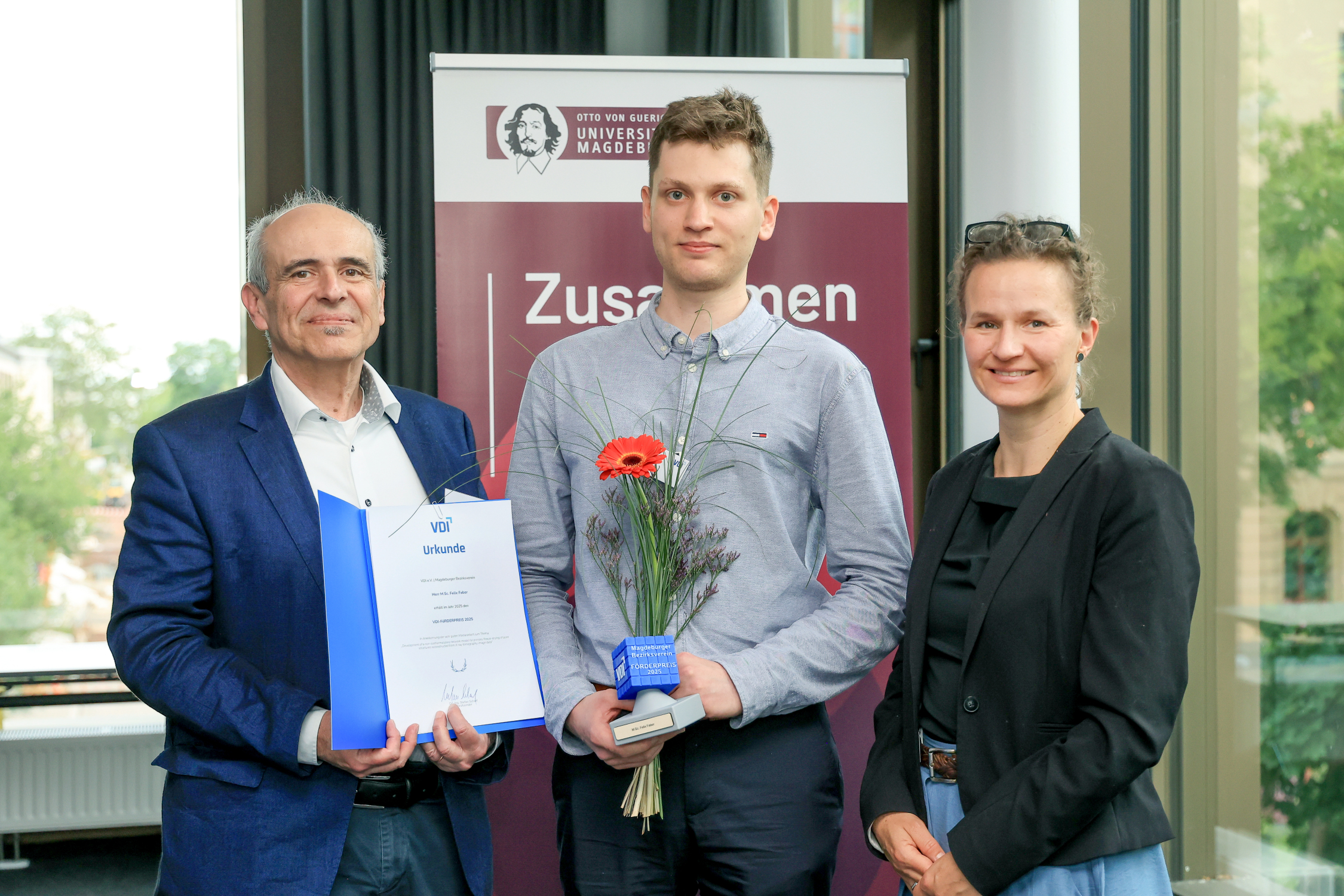
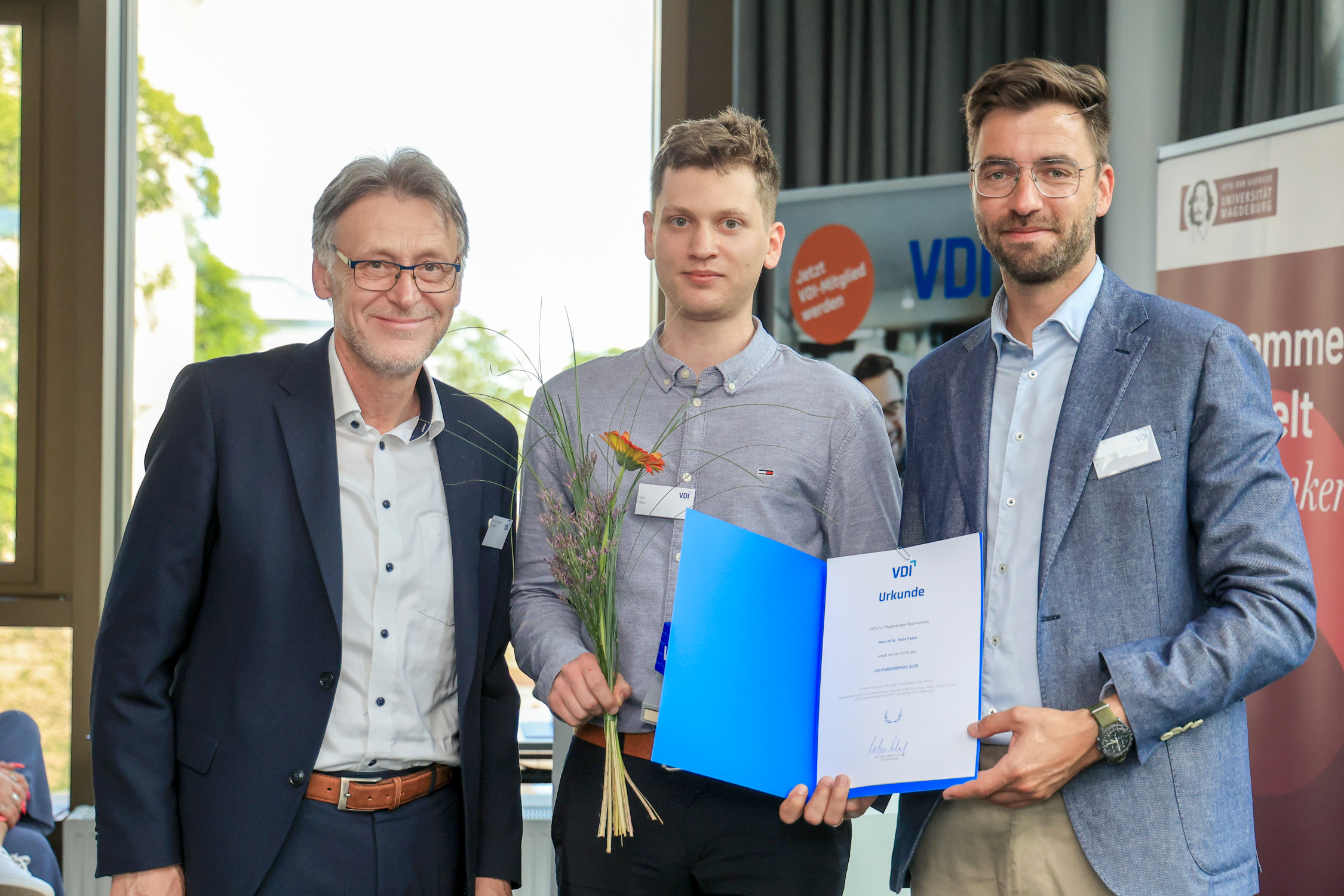
(Fotos: VDI Magdeburger Bezirksverein, © Viktoria Kühne)
EuMA Webinar series: Use of Microwave for Process Engineering Applications
Interesting talk of our group leader, Dr.-Ing. Nicole Vorhauer-Huget in scope of the webinar series of the European Microwave Association (EuMA): Nicole gave an overview about her latest works regarding microwave heating in process engineering applications:
The goal of achieving GHG-emission free production processes by the year 2050 the latest (referring to the current European climate goals) will strongly depend on the substitution of fossil-based energy carriers by „green“ alternatives. One promising option currently being pursued is electrification, using renewable sources, such as wind and solar energy. In process engineering applications, energy is usually required in the form of thermal energy to realize material conversion (e.g. phase transition or reaction). Possible (electrified) solutions for this purpose are
- indirect ohmic heating,
- direct ohmic heating,
- inductive heating and
- microwave heating.
These technologies, each, have individual advantages and disadvantages and enable different process efficiencies. Direct volumetric heating, realizable with the three latter technologies, thereby offers great opportunities for process intensification. This is essential for the reduction of the overall energy consumption of production processes, which is equally important to achieve the climate goals.
In this talk, the use of microwaves in process engineering applications is presented and discussed. Examples that will be addressed are the drying of wet materials at temperatures below 100 °C, biomass conversion by pyrolysis at temperatures up to 700 °C as well as energy supply to vaccuum freeze-drying at temperatures below 0 °C, frequently applied in the food and pharmaceutical industry.
You can still watch the webinar on YouTube:
Girs and Boys Day
The Girls' and Boys' Day for career and study orientation takes place every year and the University of Magdeburg also opens its faculties, lecture halls and laboratories to show prospective students the diverse career opportunities at the university. This year, 6 schoolgirls from different schools in Magdeburg visited our laboratory to learn about working in the lab while boiling soap. After a general introduction to our Otto-von-Guericke-Universität Magdeburg and a short introduction to the everyday life of a scientific employee, the students were allowed to get hands-on experience in our lab.
Soap boiling starts with the production of a mixture of different oils and hard fats. A sodium hydroxide solution is then used to saponify the fat mixture, one the fat mixture is heated to a desired temperature.
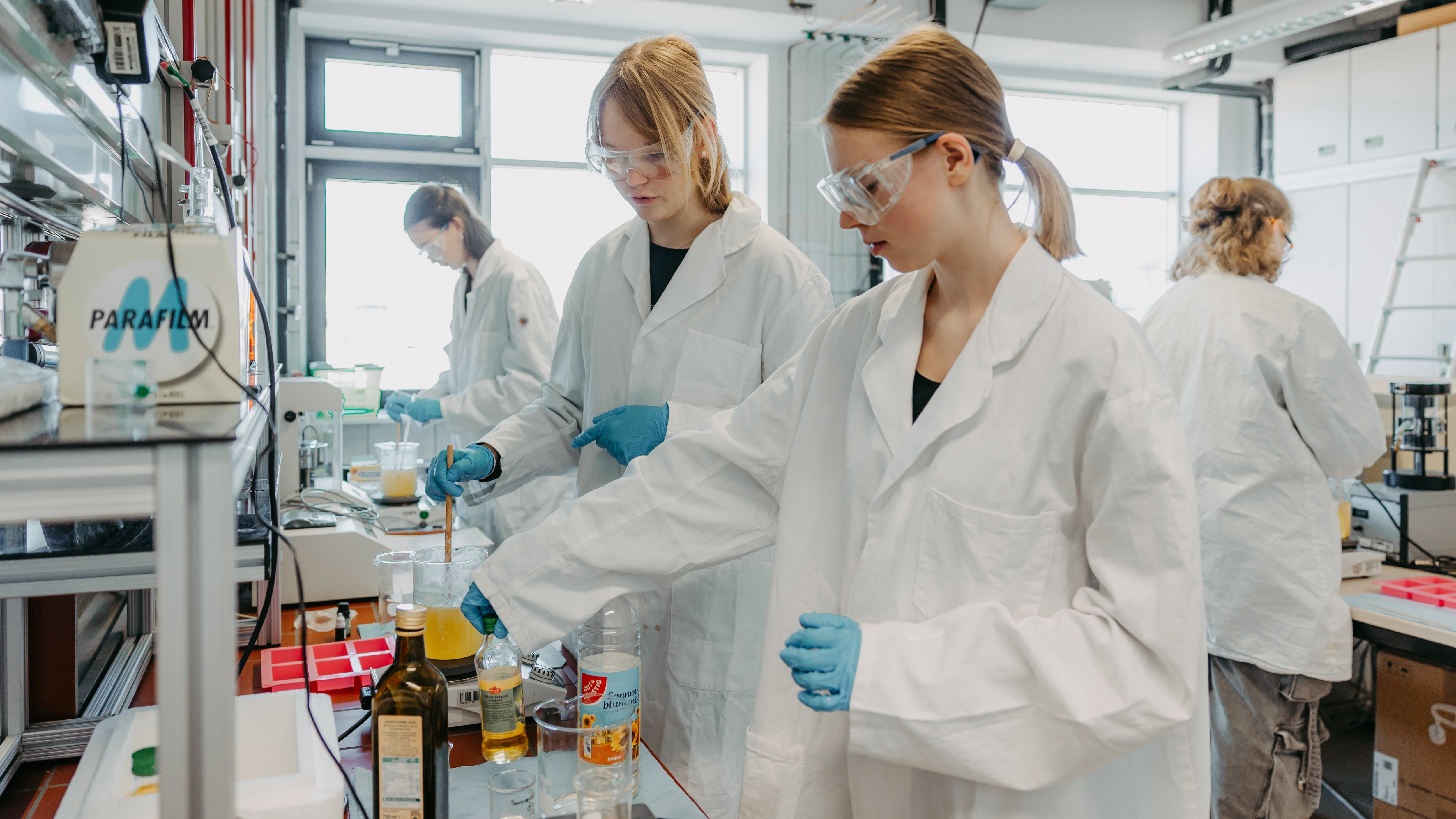
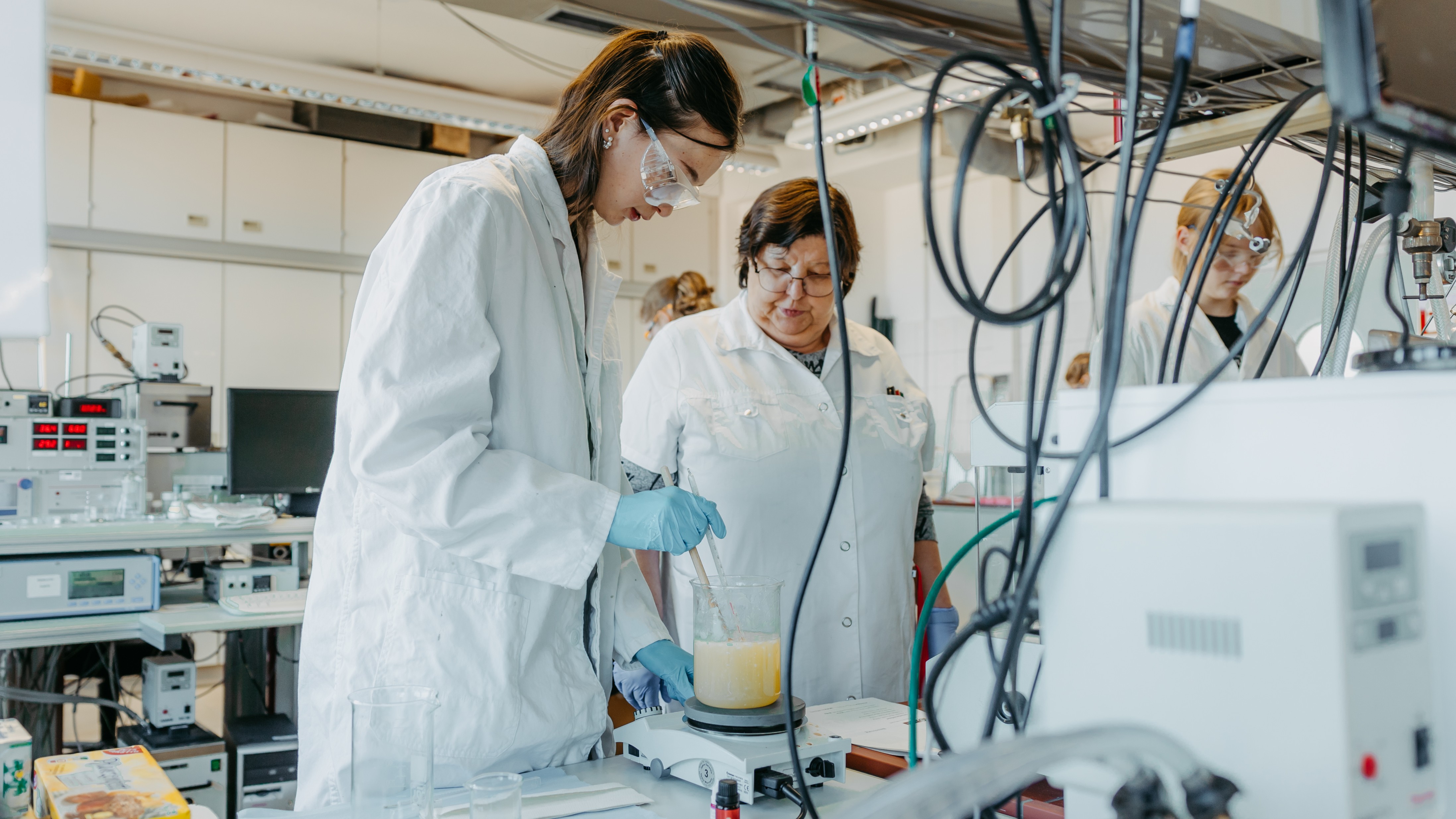
© OVGU/Jana Dünnhaupt
After successful chemical reactions, which produced the raw soap, the girls selected color and fragrance, both were mixed into the raw soap. After that, the final product could be filled into soap molds. The final product has to age for 4 - 6 weeks, until it is fully hardened and safe to use. Once this aging period has passed, we will send our young visitors the soap sample home.
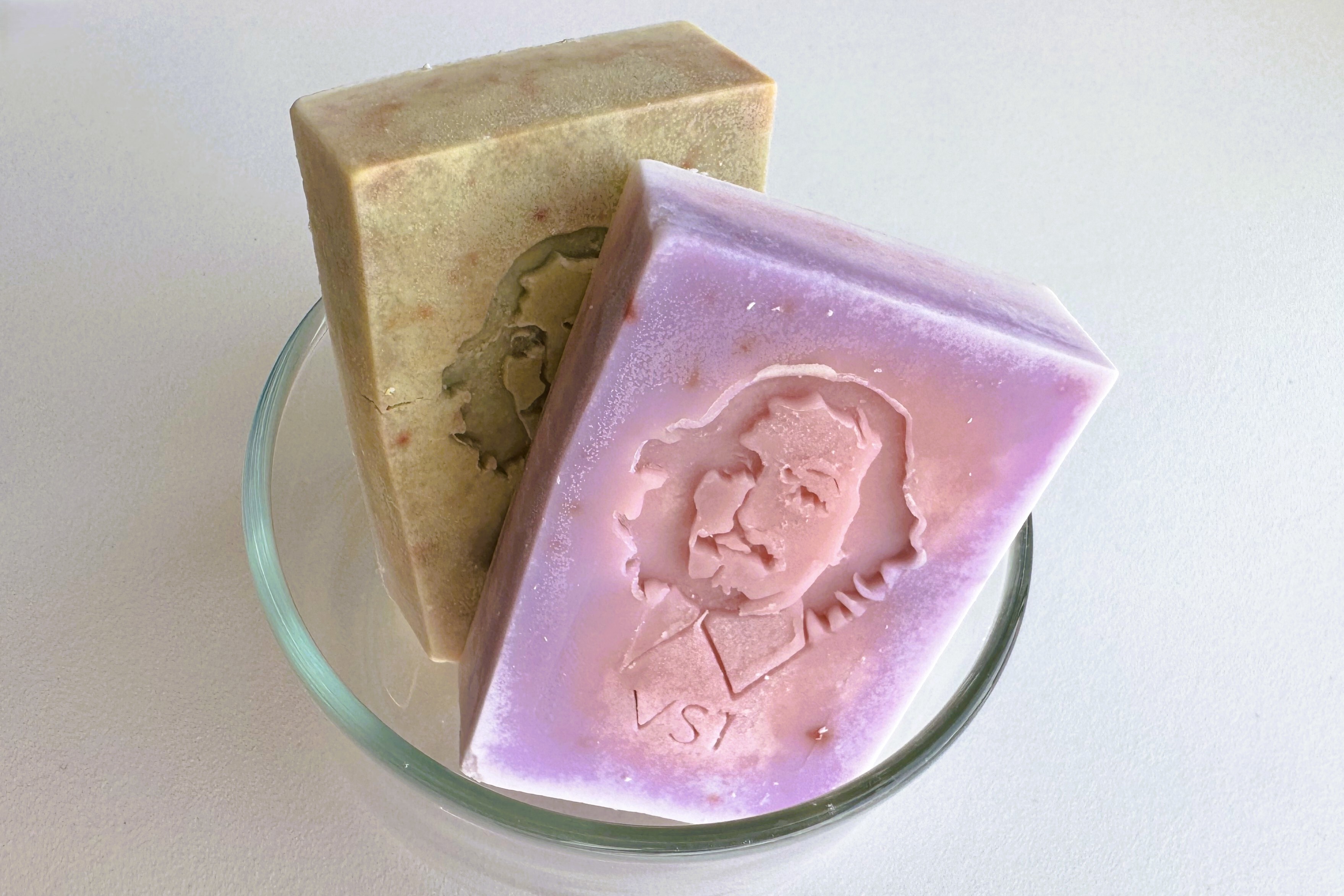
© OVGU/Felix Faber
New Publication: Use of Reconstructed Pore Networks for Determination of Effective Transport Parameters of Commercial Ti-Felt PTLs
Haashir Altaf, Tamara Miličic, Felix Faber, Tanja Vidaković-Koch, Evangelos Tsotsas, and Nicole Vorhauer-Huget. Available at: https://doi.org/10.3390/pr13040943
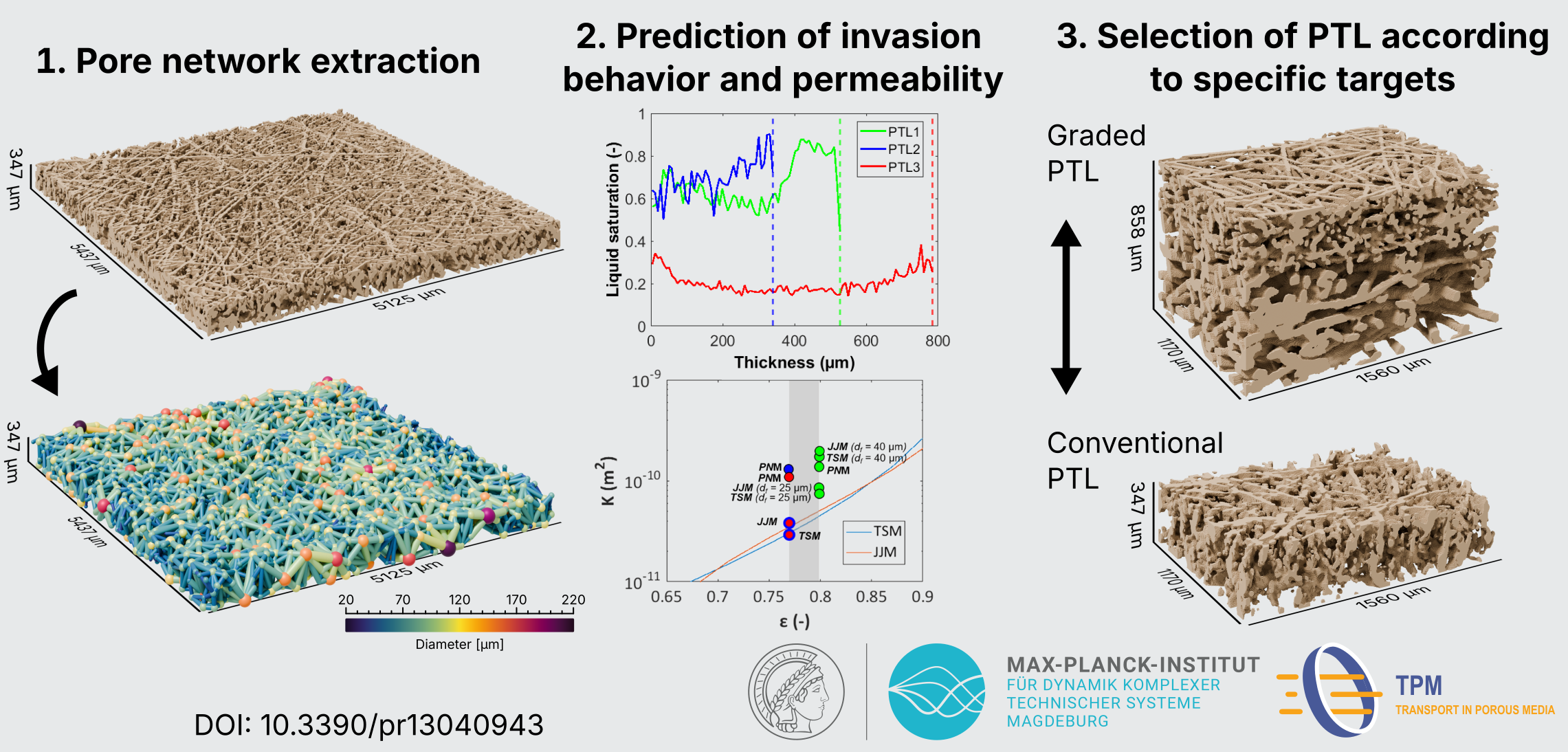
The efficiency of an electrolyzer is significantly influenced by mass, heat, and charge transport within its porous transport layer (PTL). The infeasibility of measuring them in-situ makes it challenging to study their influence experimentally, leading to the adoption of various modeling approaches. This study applies pore network (PN) modeling to investigate mass transport properties and capillary invasion behavior in three commercial titanium felt PTLs commonly used in proton exchange membrane water electrolyzers (PEMWEs). One PTL has a graded structure. Reconstructed PNs were derived from microcomputed X-ray tomography (µ-CT) data, allowing for a detailed analysis of pore size distributions, absolute and relative permeabilities, capillary pressure curves, and residual liquid saturations. The results from the PN approach are compared to literature correlations. The absolute permeability of all PTLs is between 1.1 × 10−10 m2 and 1.5 × 10−10 m2, with good agreement between PNM results and predictions from the Jackson and James model and the Tomadakis and Sotirchos model, the two latter involving the fiber diameter as a model parameter. The graded PTL, with fiber diameters varying between 25 µm and 40 µm, showed the best agreement with literature correlations. However, the capillary pressure curves exhibited significant deviations from the Leverett and Brooks–Corey equations at low and high liquid saturations, emphasizing the limitations of these correlations. In addition, residual liquid saturation varied strongly with PTL structure. The thicker PTL with a slightly narrower pore size distribution, demonstrated a lower residual liquid saturation (19%) and a more homogeneous invasion compared to the graded PTL (64%), which exhibited significant gas fingering. The results suggest that higher gas saturation could enhance gas removal, with much higher relative permeabilities, despite the greater PTL thickness. In contrast, the graded PTL achieves the highest relative liquid permeability (~70%) while maintaining a relative gas permeability of ~30%. These findings highlight the impact of microstructure on invasion and transport properties and suggest PN modeling as a powerful tool for their study.

